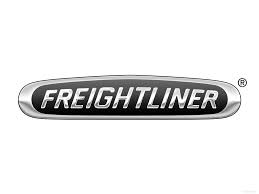Sprinter 2500 V6-3.0L DSL Turbo (2008)

Fuel Gauge: Description and Operation
Operation
OPERATION
The fuel gauge gives an indication to the vehicle operator of the level of fuel in the fuel tank. This gauge is controlled by the instrument cluster circuit
board based upon cluster programming and electronic messages received by the cluster over the Controller Area Network (CAN) data bus from the Body
Control Module (BCM) (also known as the Signal Acquisition and Actuation Module/SAM).
On vehicles without the optional steering wheel buttons, the fuel gauge is an electronic bar graph indicator located within the cluster multi-function
Liquid Crystal Display (LCD) unit. On vehicles with the optional steering wheel buttons, the fuel gauge is an analog unit driven by an electronic stepper
motor unit. In each case, the indications provided by the fuel gauge are only reliable when the instrument cluster detects that the ignition switch is in the
ON position. The cluster is programmed to move the analog gauge needle back to the low end of the scale after the ignition switch is turned to the OFF
position. The instrument cluster circuitry controls the displayed bar graph segments or the gauge needle position and provides the following features:
-
Fuel Level Message (At Ignition On) - On vehicles with the LCD fuel gauge, when the cluster first detects the ignition switch has been turned to
the ON position, the cluster immediately displays the proper number of bar graph segments representing the relative level of fuel in the fuel tank.
On vehicles with the analog fuel gauge, when the cluster detects the ignition switch has been turned to the ON position, the cluster moves the
gauge needle slowly to the proper position on the gauge scale representing the relative level of fuel in the fuel tank.
-
Fuel Level Message (After Ignition On) - After the ignition switch has been turned to the ON position on vehicles with the LCD fuel gauge, the
cluster applies an electronic hysteresis each time a new electronic fuel level message is received from the BCM in order to prevent displayed
segments from flickering when between their display threshold values or as a result of fuel sloshing in the fuel tank. Similarly, on vehicles with the
analog fuel gauge, the cluster applies an algorithm each time a new electronic fuel level message is received from the BCM in order to dampen
gauge needle movement against the negative effect that fuel sloshing within the fuel tank can have on accurate gauge readings.
-
Fuel Level Sensor Fault - If the fuel level sensor input to the BCM is detected to be an open or short circuit, implausible, or remains unchanging
to indicate that the sensor is stuck the cluster will not illuminate any bar graph fuel gauge segments or will move the analog gauge needle to the
lowest position on the gauge scale, but the low fuel indicator will not be illuminated.
The BCM continually monitors the fuel level sensor in the fuel tank to determine the level of fuel in the fuel tank. The BCM then sends the proper
electronic fuel level messages over the CAN data bus to the ElectroMechanical Instrument Cluster (EMIC) (also known as the Cab Compartment
Node/CCN or KOMBI). The EMIC will store a Diagnostic Trouble Code (DTC) for any malfunction it detects.
The EMIC applies a fuel tank characteristic value setting to the electronic fuel level messages it receives, which must be configured when the cluster is
initialized. These characteristics determine the hysteresis or algorithm the cluster uses to display the fuel level data on the fuel gauge and to control the
low fuel warning indicator.
For proper diagnosis of the fuel level sensor and circuits, the BCM, the fuel gauge, the EMIC, the CAN data bus or the electronic communication related
to fuel gauge operation, a diagnostic scan tool is required. Refer to the appropriate diagnostic information.
